How Long Does It Take to Recover From Rhinoplasty? (5 Key Tips for Optimal Recovery)
It’s really fascinating how even a few millimeters off your nose here and there can completely transform the way you look. Most men and women who come to us for nose corrections are extremely happy with the results.
However, not everyone is sure whether a nose job is right for them. Rhinoplasty—the technical term for a nose job—can do wonders for the right candidate. But who exactly is the right candidate?
The first big decision we make, of course, is whether the procedure meets the patient’s expectations. It’s difficult to see yourself objectively—that’s where we step in. Dr. Tehrani helps men and women recognize their unique beauty traits, and provides solutions on how to enhance these features.
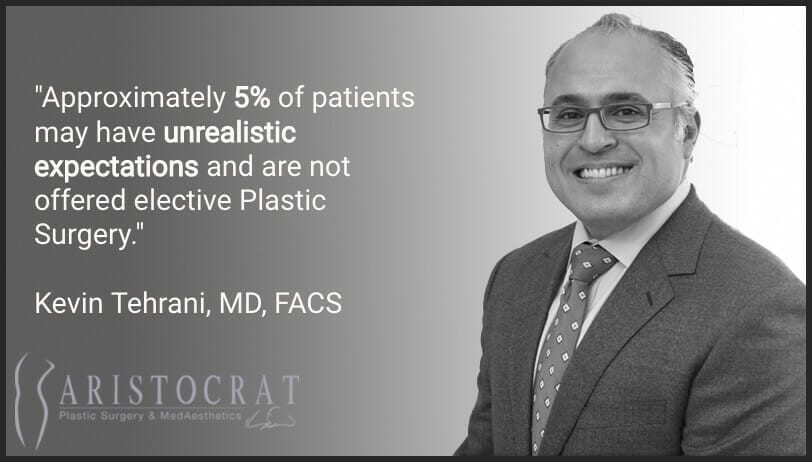
However, no less important is the context. Are you healthy enough for the procedure? Are you in a position to take time off work to heal properly? These factors play a major role in planning out your transformational journey.
The changes themselves are made on the surgeon’s table. But it’s how your body heals that will shape your final appearance.
In other words, recovery is just as important as the surgery itself.
How Long Is Rhinoplasty Recovery?
A nose job is a difficult procedure, which often involves manipulation of the nasal bones and ligaments.
Right after the procedure, your nose will be patched up to fixate your new shape and collect any liquids coming out of your nostrils.
While every individual case will be slightly different, here’s an approximate timeline for your recovery:
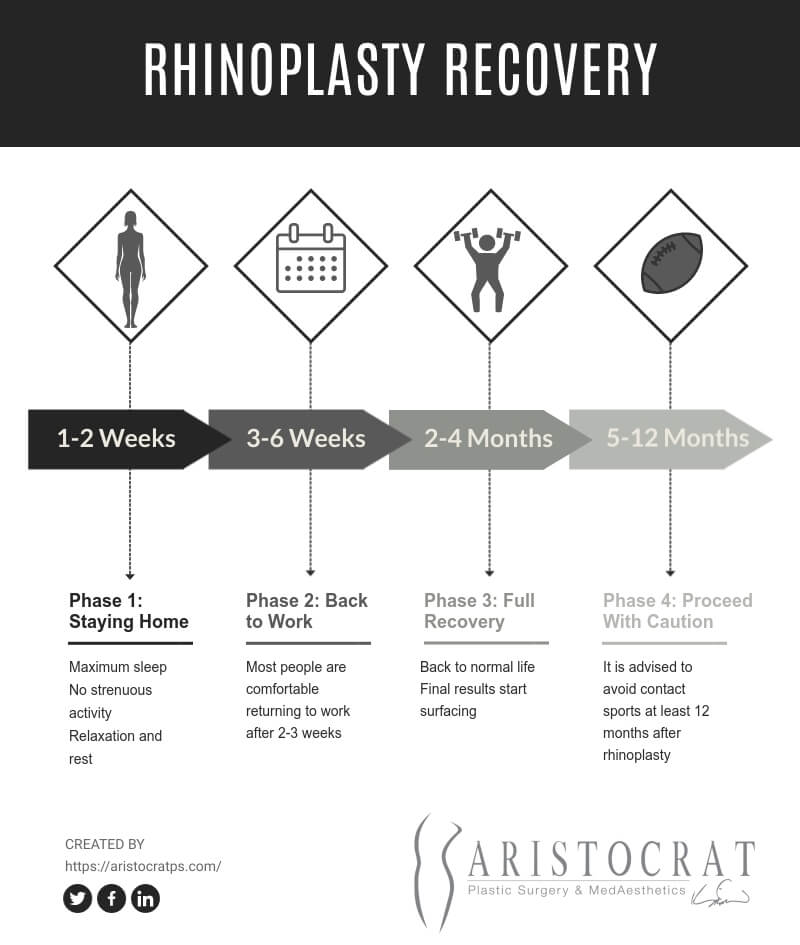
Week 1
The first week is always the hardest:
- You won’t be able to blow your nose
- Breathing only through your mouth
- Your nose will be covered with an external splint
- Significant swelling and bruising is expected
During the first week, it is recommended to avoid any physical activity as it could accidentally misplace the splint. Strenuous activity could also cause unexpected bleeding or injury to occur. Best to take it very slow and not take any chances. Dig into your blankets and wait it out.
Covered with facial patches and splints, you won’t feel too motivated to go to work either. All of our patients take at least 1 week off work after the procedure.
Week 2
After 5-7 days:
- Your doctor will likely remove the splint and the patches
- The swelling and bruising begins to fade, to a point where it’s barely noticeable
- Expect increased skin sensitivity in the nose area (sunlight exposure should be limited)
The second week is when you can start gently resuming your exercise regimen. Take baby steps: no heavy lifting or intense cardio. Both could result in a strain or other type of injury.
Most patients prefer to spend week 2 home as well. However, if you really do need to get back to the office, it will be possible.
Months 1-3
30 days after the procedure is usually the threshold when most patients start feeling and looking fully recovered after the procedure:
- The swelling and bruising is almost fully gone
- You’ll be able to start wearing sunglasses again
- Your final rhinoplasty results will start surfacing
2-3 month mark is usually when patients are cleared to return to a more active sports regimen. However, contact sports should be avoided at all costs—unless you have an explicit permission from your surgeon to do so.
Why Do Women Get Nose Jobs?
Basically, there are two groups of reasons why women go for nose corrections: aesthetic and medical.
Often times, it’s a combination of both.
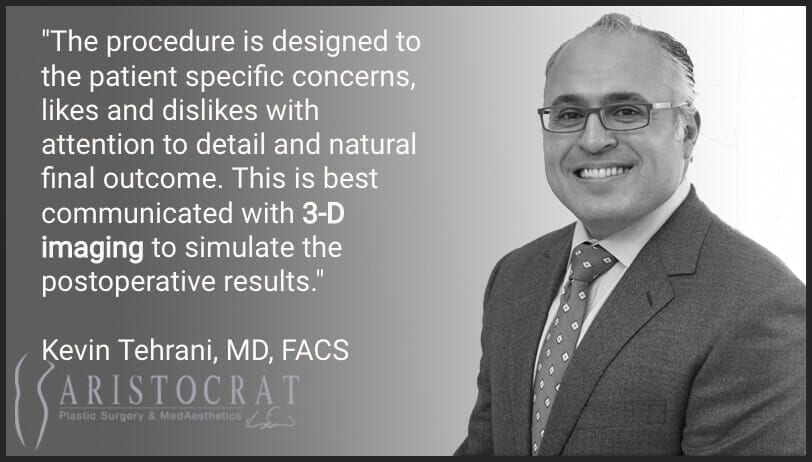
Medical Reasons for Rhinoplasty
There are a number of health-related issues that rhinoplasty can solve:
- Injury. Did you know that the nose is the most frequently broken bone in the head? While an unfortunate street fight or a bad hit during a boxing match can result in a fracture, it is far from being the only cause for a broken nose. Nasal injuries usually surface as extreme pain, excessive nose bleeding, difficulty breathing through the nose, and dark bruises around the eyes.
- Birth defects. Some nasal deformations haunt people from birth. While usually parents opt to fix these within 3-6 months after the birth of the child, in less severe cases, people choose to live out their lives without addressing the issue. Luckily, rhinoplasty can easily fix inborn defects such as cleft palates.
- Breathing problems. One of the most common medical issues people request rhinoplasty is because they have trouble breathing through both nostrils. Usually this issue occurs as a result of a collapsed nasal septum—the divider inside your nose, so to speak. In plain English, if the nasal septum collapses, you’ll have a hard time breathing through one of your nostrils. Unlike a cold, this condition won’t go away on its own.
Cosmetic Reasons for Rhinoplasty
Naturally, aesthetics play a major role in reasoning behind rhinoplasty. The nose is one of the most visible facial features, and it contributes to one’s overall looks.
There are no fixed rules on what type of nose is considered beautiful. The beauty of the nose is directly tied to your other facial features. When our patients request nose jobs, we help them arrive at a solution that would complement their facial features the best.
That being said, most frequently patients request rhinoplasty because:
- They want a change in the size of the nose (bigger, smaller)
- They want a change in the angle (more pointy, more dull)
- They want it to be more straight (fix the “crooked” appearance)
- They want their nasal tip reshaped (make it point more upwards or downwards)
- They want to change their nostrils (make them look bigger or smaller)
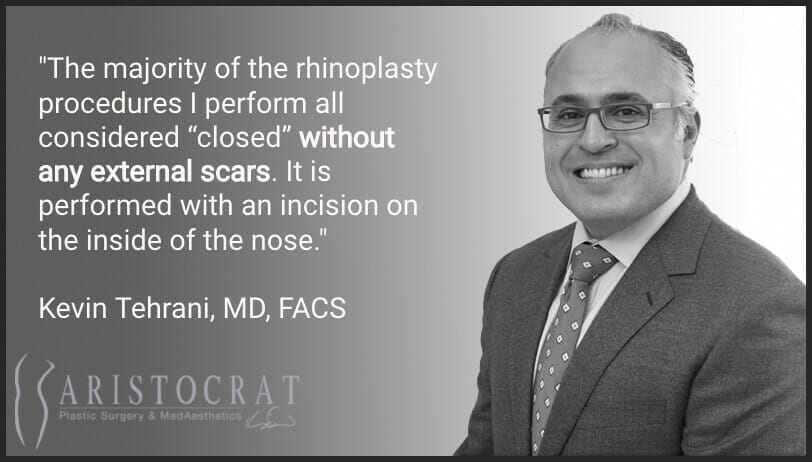
What Actually Happens Before, During and After the Procedure?
Proper planning and modelling of the desired outcome is probably the most important part of the procedure. Our goal here at Aristocrat is the satisfaction of our patients. To achieve that, we employ a number of instruments to make sure we’re on the same page with the patient:
- First of all, it is our job to hear our patients out, and truly listen to what bothers them about their current shape of the nose. We investigate both aesthetic and medical aspects of a potential procedures, and make sure the patient is signing up for a procedure they truly want.
- Only then we begin 3D modelling to illustrate how the potential new nose shape would look after the procedure. 3D images help our surgeon and his patients equalize the expectations.
During the procedure, you will be administered general or local anesthesia. Under general anaesthesia, you will fall “asleep” and will not remember any of the procedure. Ultimately, this decision comes down to the patient’s preferences and the scope of the chosen procedure.
Depending on the type of the procedure, an internal or external incisions will be made. Since rhinoplasty procedures can be very different from one another, it would be of little effect to try and generalize them.
Rhinoplasty is a day surgery, which means that no overnight stay will be required. You will be able to go home the same day after the procedure.
5 Rules to Make Your Recovery Quick and Uneventful
Staying at home for a couple of weeks—not being able to breathe through the nose—is never really fun. But it can be made easier.
1. Be Ready, Physically
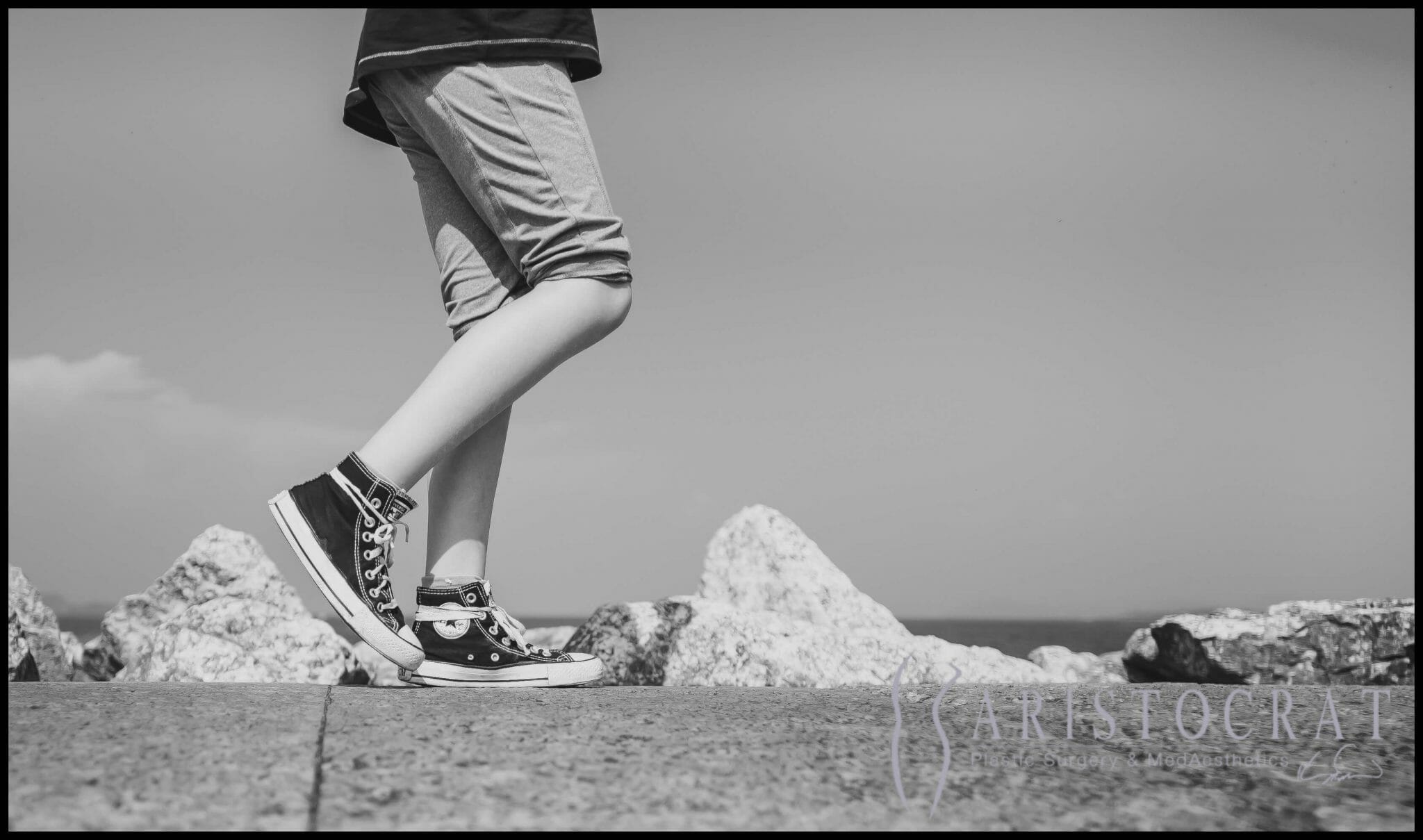
The number one thing one can do to make sure they heal properly and quickly is take care of their body prior to the procedure.
A Board-certified surgeon will always evaluate your overall health. People with advanced diabetes, smokers and those who’re struggling with weight problems are sometimes rejected for the procedure. It’s for their own safety, as these conditions are major factors that cause complications.
But even if you do get accepted for a rhinoplasty procedure, it does not mean you have a green pass to forget about your physical health for the time being. Healthy habits before the procedure translate into smooth and uneventful recovery afterwards.
One of the most important thing in terms of overall health is regular exercise. It doesn’t have to be anything dramatic: even daily 30-minute walks can do wonders for your cardiovascular system—which, in turn, will help prevent blood clots from forming during and after the procedure.
If you’re currently not at that activity level, make sure to get daily 30 minute walks for at least 30-35 days before the procedure. It really is that important.
24 hours before the procedure, you should cut any alcohol from your diet. As alcohol molecules thin the blood and increase the bleeding, it can lead to an increased chance of a complication. It can also interact with anaesthesia administered during the procedure.
Smoking is also a big no-no when it comes to any surgical operations. Regular smokers are at an increased risk of a number of complications, some of which can be life-threatening. While most surgeons will strictly forbid smoking 30 days before and after the procedure, it is best to leave your nicotine-free window as wide as possible.
Tobacco smoke can also interfere with anaesthesia, and certain drugs you may be taking after the procedure. It weakens the immune system, and slows down our healing processes, which can increase the chance of a post-op infection.
If you don’t feel like you can keep up with all of these instructions, at least quit smoking a couple of months before the procedure. That is the most important provision.
2. Gather Necessary Supplies
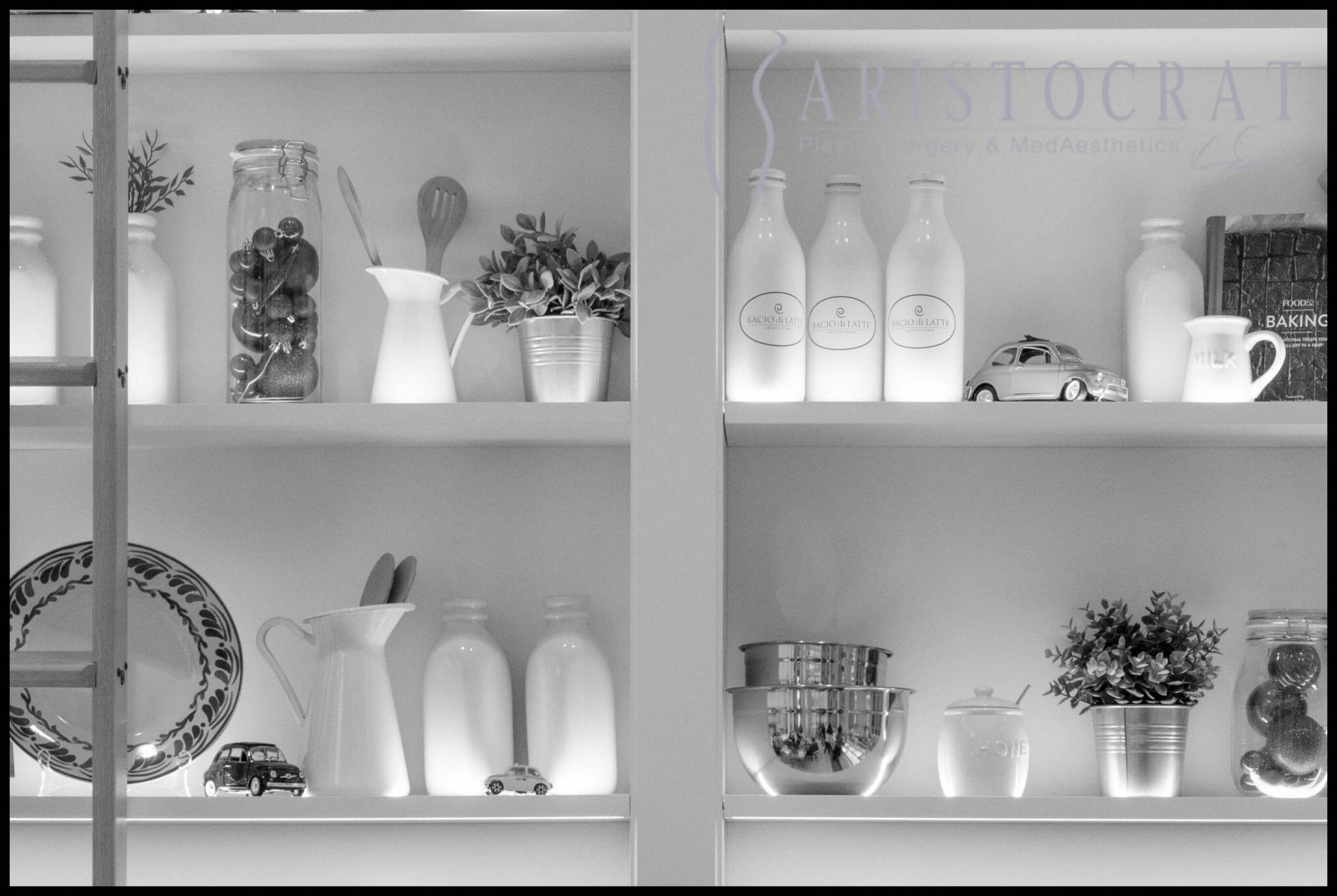
After your procedure, you will be sent home with splints holding your new nose together. During your early recovery, you will have a hard time breathing through the nose. To ease the blow, there are a few things that could help.
One of such things is a steam vaporizer. The device releases and spreads humidified air in your room. The air will moisten your airways and make breathing through the nose easier and more comfortable.
DIY facial steam procedures could help achieve even better results, but they do require you to lean over to a bowl of steamy water (or a sink) with a towel covering the back of your head, whereas an air humidifier will do its magic in the background, without you having to put in extra effort.
Make sure to get a few bottles of saline nasal spray before the procedure. Not only these will moisten your nasal airways, they will help you declutter any debris blocking the nasal passages, making breathing easier. The key here is to be gentle, and avoid putting unnecessary pressure inside the nose, as your new nose is at its most vulnerable state.
Gentle administration of nasal spray 4-6 times a day can do wonders to make you feel more comfortable. Make sure to talk to your surgeon about this to get the right one.
The last rhinoplasty-specific supply you should get before the procedure is a cooling gel eye mask, or some cold water/ice bags. The math here is very simple: applying cold bags to your nose area will help reduce the bruising and swelling, resulting in a quicker recovery.
3. Create the Perfect Healing Space
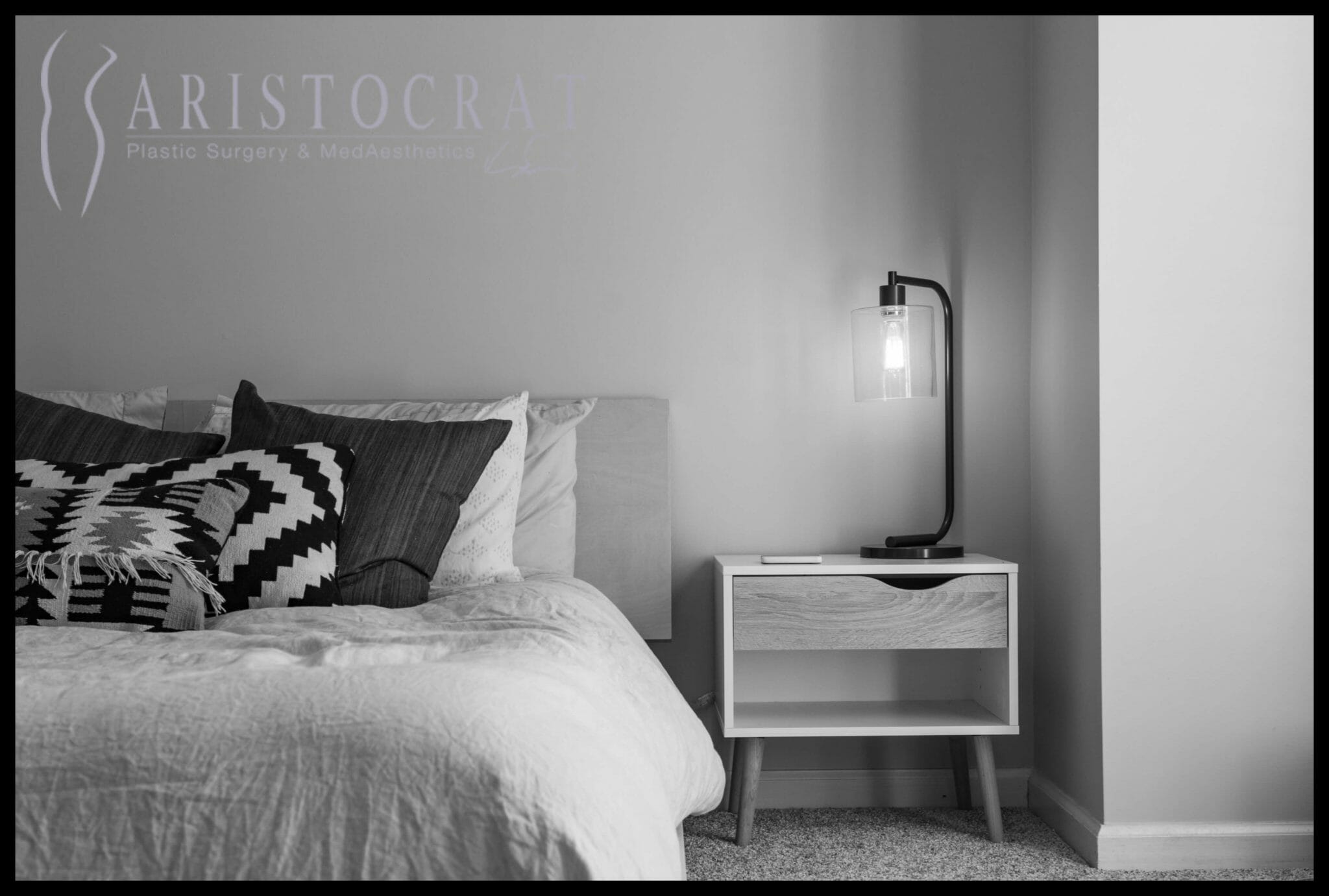
After the procedure, cleaning out your house will be the last thing on your priority list. Therefore, make sure to do a major house cleaning session before Day X comes.
During the first couple of weeks after your nose job, you can find yourself feeling weak, somewhat disoriented and confused. It is not uncommon for women to go on an emotional rollercoaster after major procedures such as rhinoplasty. Everytime you look in the mirror, you will be reminded of your decision. You might second-guess that decision.
Having a clutter-free, tidy healing space helps. To say the least, it will allow you to mentally process the change. But readjusting your home to optimize the recovery is the pragmatic thing to do, too.
The first thing you want to do is to declutter the floor. Make sure no kids toys are lying around on the ground. Put loose things where they belong—hide them in the closet. Your body is already healing from the injury, and tripping over a random object on the floor could cause damage. Even if you don’t fall on the face, you might still displace a splint or open up the incision site.
Then, it is important to rearrange your household items so that they’re easily accessible. Any items that might require excess effort to get—for example, pulling up a chair to reach the tea cups—should be placed at a more convenient location (for example, next to the kettle.)
Obviously, rhinoplasty won’t affect your physical ability that much—unlike a full-on tummy tuck—but it will still help you maintain a harmonious mood while recovering.
Make sure all the items you may need throughout the next couple of weeks—such as phone and laptop chargers, books, medications, tissues—are placed somewhere where you can always find them. You do not want to go on major search expeditions through the house while your nose is still healing up—after all, most injuries do happen at home.
4. Plan Things Ahead
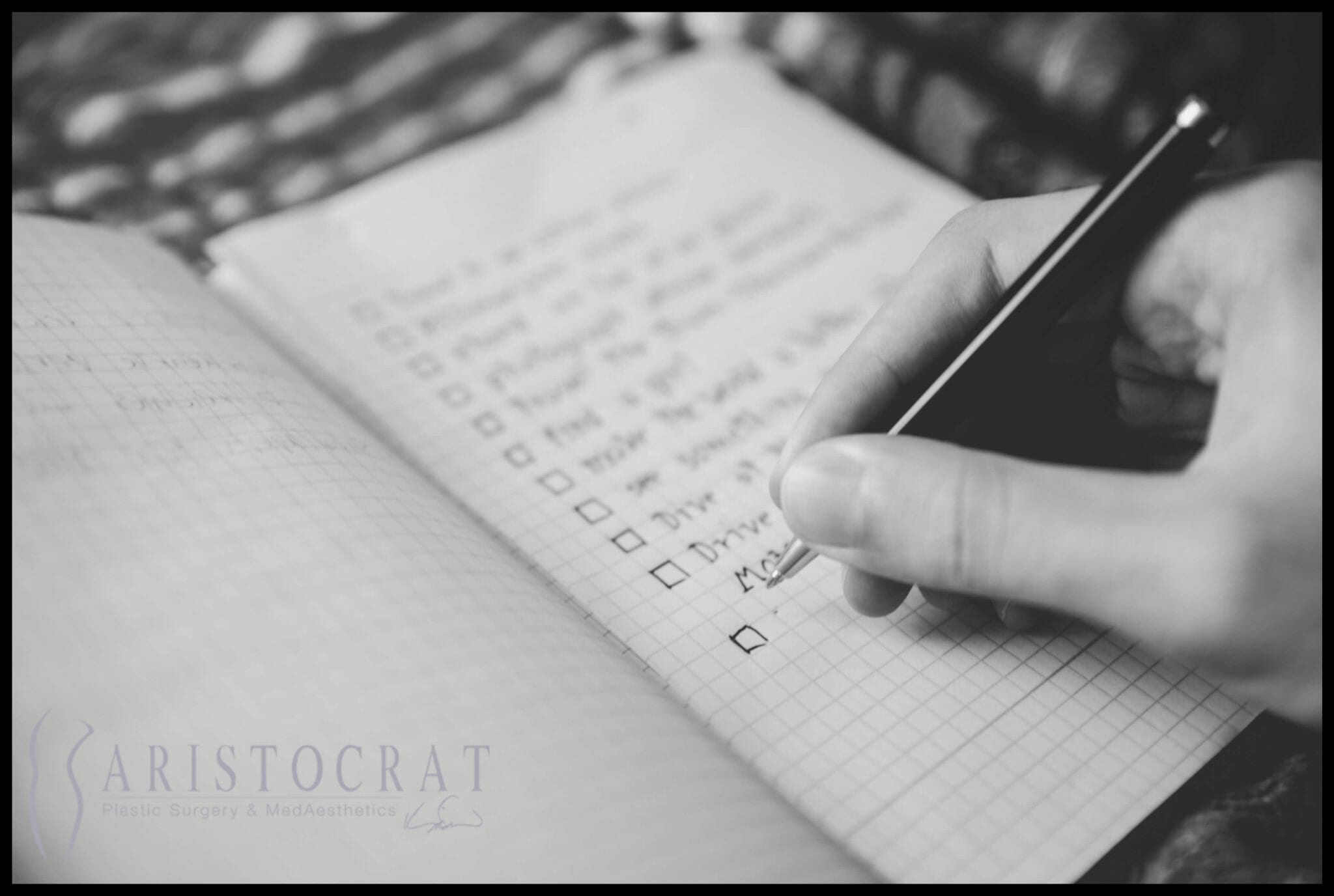
One of the things that you don’t want to do during your recovery is to buzz through a busy schedule.
For one, you probably won’t feel like leaving the house for at least 1 week, until your splints come off. Therefore, many daily chores are out of the option—not to talk about work projects or major social events.
The first thing to do is to arrange for someone to look after your kids. Make sure you have someone to take them to the school and any other activities they may be into. Last-minute logistic solutions will only add to your emotional turmoil.
Even when you’re at the house, if you have small children that need looking after, it’s a good idea to call a relative or hire a sitter for a couple of weeks. They will keep your children fed and occupied, so that you can spend time sleeping and healing.
Same applies to pets: make sure they have something to eat for the next couple of weeks.
And that’s the other thing: food. While you’ll by no means be incapacitated after the procedure, you might still not feel so hot in terms of cooking. Instead, plan your meals in advance, or have someone over to your house to cook for you. Takeaway is always an option.
Whatever you do, make sure you’re as relaxed as possible. Multiple studies have shown that stress significantly reduces our bodies’ natural healing abilities. Slower healing means more recovery downtime, a larger infection possibility, and worse final results.
At work, let everybody know that you’ll be working from home—or, ideally, not working at all (if you have the luxury.) If you’re in a middle of a busy project, it might be a good idea to postpone your rhinoplasty procedure.
5. Sleep.
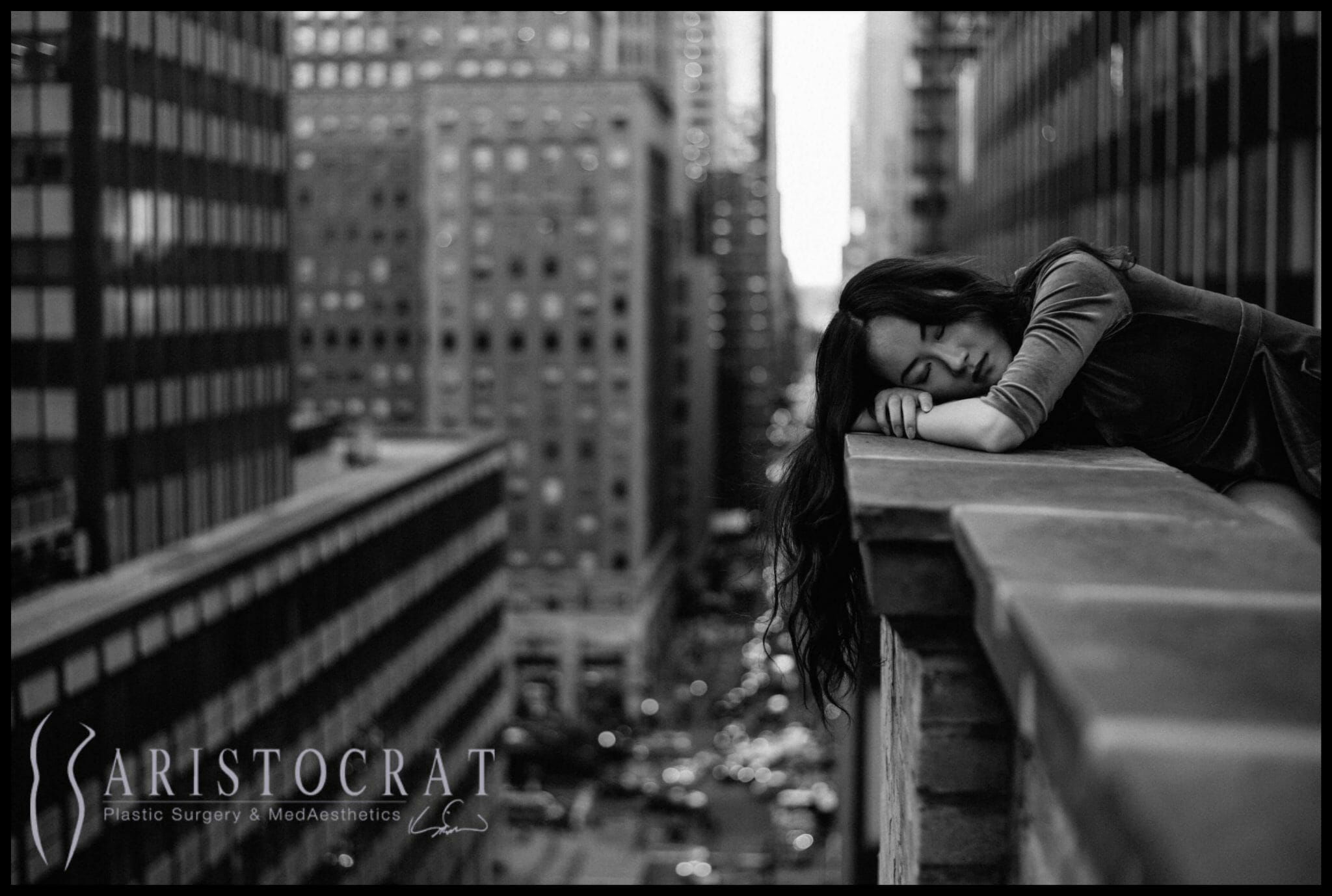
Sleep is going to be your best friend and most important guideline during the recovery. Not only quality sleep will speed up the recovery, it will help your body heal better, too, improving the final results.
The way you set up your bedroom will play a major role in how well you sleep.
First and foremost, make sure your room is aired-out and cool before you go to sleep. It is scientifically proven that temperatures that are too high or too low interrupt sleep. The ideal temperature for quality sleep is between 60 degrees and 67 degrees.
While this goes without saying, make sure your room is dark at least 20-30 minutes before you actually go to sleep. Our bodies react to light naturally, and a dark environment helps us drift into our dreams.
But there are other practical things you can do to get more, better sleep.
One of such things is turning off your alarm. Waking up naturally will make sure your body gets the rest it needs to heal properly.
In the morning, try and get some sunlight. Go for a stroll, or set up a chair in the balcony. Even standing next to an open window can help you regulate your sleep cycle. Our bodies are smart, but they can be manipulated, too.
Final Verdict: Your Recovery Is in Your Hands
Plastic surgery is not the same as getting a haircut: it will require a level of commitment from you both before and after the surgery.
Before the procedure, the best thing you can do is to plan responsibly and prepare physically. While generous planning will help you minimize stress, physical health will power your body’s healing processes, minimize the possibility of a complication and improve your final results.
After the procedure, it is important to take as much time as possible off work and off… everything, really. Our bodies heal best when our minds are stress-free and our schedules are clear.

